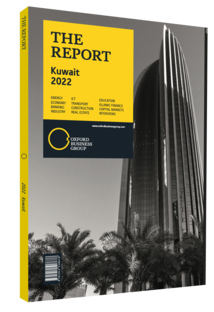Islamic banking gaining global traction
After a resilient performance in 2020, the international Islamic finance sector fared positively in 2021 as an improved economic environment and a rise in the number of large projects combined to drive demand for services. Despite the twin challenges of the Covid-19 pandemic and the fall in international oil prices that affected many of the world’s heavyweights in Islamic finance, the global sector’s assets grew by 10.2% in 2021, according to ratings agency Standard & Poor’s (S&P). Although this was down from the 17.3% growth recorded in 2019, it was a strong performance and signalled recovery from the global recession in 2020.
Building on this, in June 2022 S&P forecast that the global Islamic finance industry would grow by about 10% annually in 2022 and 2023. This projection was largely based on the expected economic recovery in key Islamic finance markets in the Gulf and Southeast Asia – driven by the rollout of large infrastructure projects in countries like Saudi Arabia and Qatar – and an increase in sukuk (Islamic bond) issuance, which reached $147.4bn in 2021, up from $139.8bn in 2020.
Market Share
Perhaps unsurprisingly, the continued growth of Islamic finance is translating into an increased prominence in international markets, particularly in countries that are majority Muslim. For example, in the GCC, sharia-compliant banking assets as a proportion of total banking assets have grown significantly in recent years. The GCC countries represent the world’s largest Islamic finance market, accounting for a combined 45% share of global sharia-compliant assets.
In Qatar, the proportion of Islamic finance assets grew from 19.7% of the total in 2018 to 26.6% in 2020, while in Malaysia – the world’s third-largest Islamic finance market – the share of sharia-compliant finance increased from 22.8% to 30.1% over the same period. However, this trend is not universal: Islamic banking assets in the UAE experienced a slight fall in terms of their share of overall assets, and the corresponding figures in Bahrain and Oman expanded by a small margin.
Consolidation
The increases in asset value and market share have led many conventional banking institutions to turn their attention to Islamic finance. Along with a wider trend of mergers and acquisitions (M&A) in the Gulf, some of conventional players have sought to acquire or merge with Islamic banks in recent years.
For example, in 2019 Abu Dhabi-headquartered Islamic finance institution Al Hilal Bank combined with Abu Dhabi Commercial Bank and Union National Bank in the region’s largest tie-up to date. The merged entity became the UAE’s third-largest bank, with an estimated $114.4bn in assets. M&A activity continued into 2020, with the National Bank of Bahrain (NBB) acquiring a 78.8% stake in Bahrain Islamic Bank in January of that year, while in July Oman Arab Bank completed a takeover of fellow Omani institution Alizz Islamic Bank. Elsewhere, Kuwait Financial House’s $11.6bn acquisition of Bahrain’s Ahli United Bank was approved in July 2022, and completed in October of that year.
Green Sukuk
Demand for green sukuk has increased in recent years. Following the first issuance of a green sukuk by Malaysian firm Tadau Energy in 2017, interest in the product has grown steadily. In February 2022 Saudi Arabia’s Riyad Bank closed a $750m sustainability sukuk. It was an additional Tier-1 sukuk, and 4.3 times oversubscribed at $3.2bn. This followed Saudi National Bank’s $750m debut sustainability sukuk in January, proceeds from which will fund projects that meet the criteria of the bank’s Sustainable Finance Framework, such as renewable energy facilities. Furthermore, in March 2022 Infracorp, a Bahrain-based infrastructure asset management company, announced the issuance of the kingdom’s first green sukuk, worth $900m.
In June 2022 S&P Global forecast that total sukuk issuance would see a slight decline in 2022, though issuance is still expected to exceed the roughly $96bn worth of sukuk maturing that year. Longer term, the agency expects current sustainability and digitalisation trends to be key in driving future growth opportunities.
You have reached the limit of premium articles you can view for free.
Choose from the options below to purchase print or digital editions of our Reports. You can also purchase a website subscription giving you unlimited access to all of our Reports online for 12 months.
If you have already purchased this Report or have a website subscription, please login to continue.

